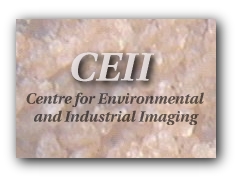 |
 |
 |
|
Compression Techniques for Deep Ocean Imaging,
with Special Reference to Wavelets and JPEG 2000
Master of Science Thesis submitted:
15-05-2002
Within Engineering Department,
University of Aberdeen, Scotland, UK, and Developed within Center of Environmental
and Industrial Imaging.
Author: Eugenio Ballini - Supervisors:
Dr. Alastair R. Allen and Prof. Imants G. Priede.
From the Thesis it will
be extracted two Papers in English and some Reports in Italian; all of
them will be iIllustrated in this Page ![]()
Various kind of Deep Sea Projects
around the world need the use of state-of-the-art image coding techniques
to record and analyse the life belonging to the depths of the sea.
This thesis considers various aspects
and features of certain classes of deep ocean images, analysing them from
an object-background point of view; several image and video coding techniques
are explored and above all wavelet-based techniques and the JPEG 2000 Standard.
Wavelet coefficient matrices of
different deep sea images are, in the first part of the thesis, analysed
to underline the huge quantity of information contained in a small number
of wavelet coefficients, significant for a faithful reconstruction of the
image; from an image compression point of view this condensation of visual
quality information carried by the coefficients is very important to improve
the trade-off between distortion, image quality and compression rate.
Starting from this assumption,
several different image coding algorithms based on wavelet techniques,
like EZW, SPIHT and ECTCQ, are studied to exploit the relationship among
different subbands coefficients having the same spatial position, and the
relationship among nearby coefficients.
These wavelet based techniques
gave rise to a new high level image coding standard, JPEG 2000, that gives
a real improvement of image quality performance compared to other standards
like JPEG and MPEG-4 VTC both from an objective and subjective point of
view.
The manifold features and functionality,
actual and future, of the JPEG 2000 Standard, such as Region of Interest
coding, progressive bitstream and random access, coupled with the comparison
results obtained from tests developed on deep sea images, in line with
results obtained with JPEG 2000 test images, show us how much this standard
could be useful for storage and transmission of compressed image files
within Deep Sea research.
In accordance with the regulations
for submission of a thesis I declare:
· This thesis has been composed
by myself.
· This thesis has not been
accepted in any previous application for a degree.
· The work has been done
by myself.
· All quotations have been
distinguished by quotation marks and the sources of all information acknowledged.
This thesis, divided into 7 chapters
and 4 appendices, is constituted of four different but interconnected parts:
an introduction to the project, the resources utilised and the standards
actually used in image and video coding (chapters 1, 2, 3 and appendix
B); an explanation about wavelet techniques, wavelet coding algorithms
and the JPEG 2000 standard (chapter 3 and appendices B to D); experimental
tests performed with wavelet techniques and the JPEG 2000 standard (chapters
4, 5 and 6); and conclusions and future improvements (chapter 7).
Chapter
1 provides various types of background information on the AutoMERS
Project, CEII and Oceanlab research centres, and images used within them,
highlighting their object-background structures; these kinds of images
will be defined further in chapter 3 and will be used for experimental
tests illustrated in chapters 4, 5 and 6.
In chapter
2 we discuss the three different ways to treat a set of image files
(stream of bits, set of still images and video sequences) and give a brief
introduction to wavelet principles, still image coding standards (such
as JPEG, JPEG 2000, MPEG-4 VTC, DjVu) and video coding standards (for example
H.261, MPEG-1, MPEG-2, MPEG-4 and MPEG-7).
Chapter
3 depicts the different software applications and programs used
in our experiments, the various deep sea images used in our tests and the
main parameters utilised to compare these images and to extract some interesting
features.
Chapter
4, in which we perform some tests on wavelet coefficients, is divided
into two parts: the first one explores the distribution of wavelet coefficient
amplitudes within the DWT resulting matrices, the second one focuses attention
on the relative amplitude values of these coefficients.
Within the two sections of chapter
5, we explore the results obtained by our tests on image quality
using the PSNR parameter; in the first section the importance of the information
contained in the different subbands, and the relative importance of the
loss of these are highlighted, while in the second section a wavelet coefficient
thresholding is utilised as an easy way to explore the compression possibilities.
An experimental comparison between
JPEG 2000 and other image coding standards and algorithms, like JPEG, SPIHT,
MPEG-4 and JPEG-LS, is presented in chapter
6, together with other downsampling compression techniques and
ROI coding; these comparisons are performed with lossy and lossless compression
tests on AutoMERS project test images, from an object-background point
of view, as ROI coding experiments show us.
Chapter
7 illustrates the manifold conclusions we have obtained from the
development of projects, tests and experiments linked to our thesis and
some ideas for future improvements.
Appendix
A contains colour prints of several images printed in grayscale
within the thesis;
Appendices
B, C and D
describe techniques and algorithms used in the body of the thesis: this
includes general information about wavelets, different wavelet based image
coding algorithms and a brief explanation of JPEG 2000.